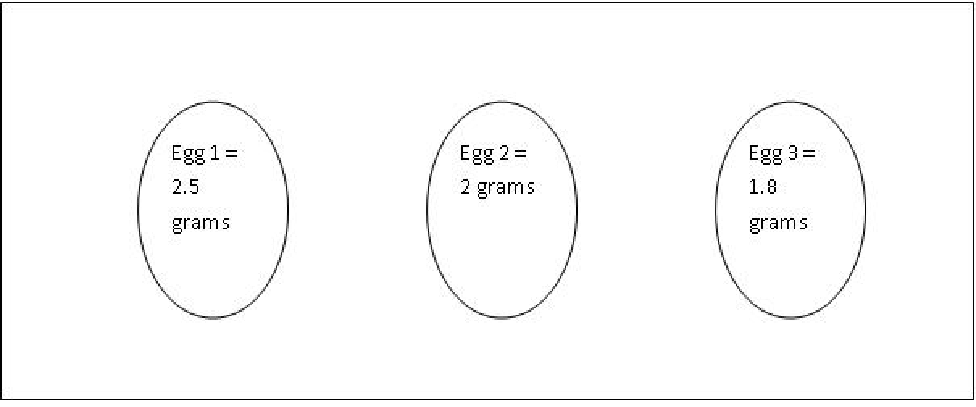Consider a tadpole becoming a toad. You would expect to find it changing its form of nitrogenous waste from
A. urea to uric acid.
B. ammonia to urea.
C. uric acid to urea.
D. uric acid to ammonia.
E. urea to ammonia.
Answer: B
You might also like to view...
Which egg is isotonic to the solution?
Three (3) eggs are boiled and all weigh 2g. The eggs are placed in a 15% solution of NaCl and reweighed after 30 minutes.

A. Egg 1
B. Egg 2
C. Egg 3
Clarify Question
· What is the key concept addressed by the question?
· What type of thinking is required?
Gather Content
· What do you know about osmosis? What other information is related to the question?
Choose Answer
· Given what you now know, what information and/or problem solving approach is most likely to produce the correct answer?
Reflect on Process
· Did your problem-solving process lead you to the correct answer? If not, where did the process break down or lead you astray? How can you revise your approach to produce a more desirable result?
Compare the traits of hemichordates (acorn worms) to chordates
What will be an ideal response?
Which statement about digestion in ruminants is FALSE?
a. Ruminant animals have symbiotic bacteria to aid in the digestion of their food. b. Food materials are re-chewed. c. Chewing results in mechanically breaking down food and exposing more cellulose to digestive enzymes. d. Ruminants have a smaller range of foods in their diet than do humans. e. Ruminants have a single but disproportionately large stomach.
DDT was once considered a "silver bullet" that would permanently eradicate insect pests. Today, instead, DDT is largely useless against many insects. Which of these would have been required for this pest eradication effort to be successful in the long run?
A. Larger doses of DDT should have been applied. B. None of the individual insects should have possessed genomes that made them resistant to DDT. C. The frequency of DDT application should have been higher. D. All habitats should have received applications of DDT at about the same time. E. DDT application should have been continual.